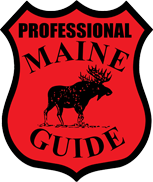The Land Use Planning Commission staff are proposing changes to the adjacency principle that would affect where businesses related to day use recreation can locate. Many of these proposed changes were developed with your helpful feedback in mind.
The LUPC is proposing to update its zoning system. Right now, new zones for subdivisions and businesses must locate within a mile of similar existing development, like a cluster of camps or an existing business. This system was established in the 1970s and has worked okay, but has had some problems over the years. When development is farther away from public services it can lead to difficulty providing those services, and scattered development may interfere with forestry, recreation, and habitat.
The proposed update would mean that new zones would be located in a Plantation or within about 10 miles from towns that provide public services unless the proposed use is resource dependent. Resource dependent means that the use must be near a resource that is not necessarily near town, for example, wood fiber businesses, some recreation-related businesses and certain recreation-related subdivisions. This change does not affect where homes or camps can be built unless they are in a subdivision, and does not change environmental protections currently in place.
The proposal would provide more opportunity for recreation based day-use businesses such as gear rental operations near the recreation site or trail centers, and for forest product processing operations; more opportunity for subdivisions and businesses to have flexibility to locate in Plantations or near certain towns; and less potential for subdivision development on currently undeveloped or lightly developed lakes and ponds that are in remote areas. Refining the zoning system is important for creating economic opportunity that does not detract from our natural resources.
Public input has been very helpful so far. A 2017 survey of people who live, work, own property or recreate in the UT garnered more than 2,000 responses. Among other results, it was clear that people value the natural resources and quality of life in rural Maine. The Commission is interested in explaining the proposal to the public and getting suggestions about what parts of the proposal seem to work best, and how other parts may be improved.
Here is a link to a map showing the proposed Primary Secondary Locations, and conserved lands:
There is a lot of additional information on their website that may also be helpful.


